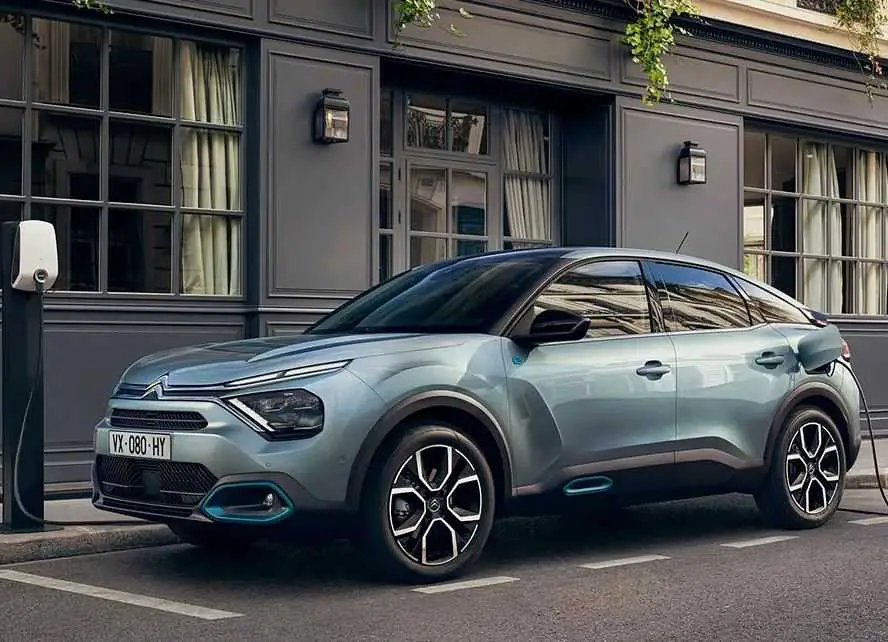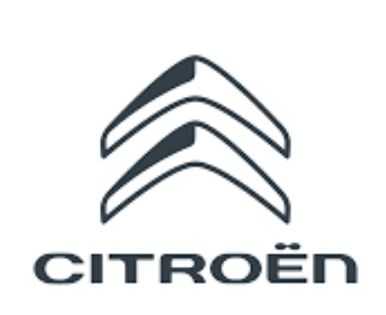Citroen C4 2021-2023
The French car company Citron makes the C4, which is a small car. The newest version of the C4 came out in 2020 as a 2021 model, and production is expected to last at least until 2023.
In terms of style and engine choices, the 2021 Citron C4 is different from its predecessor. It looks more like an SUV because the ride height is higher, the body lines are strong, and the style is bold. Citron’s signature V-shaped grille and slim LED headlights are on the front end, giving it a unique look. One thing that makes the C4 stand out is that it comes with different powertrain choices. It comes with both petrol (petrol) and diesel engines, as well as the Citron -C4, which is a fully electric car. The e-C4 is driven by a 50 kWh battery pack and can go about 217 miles (350 km) on a single charge, according to estimates.
The C4 has a modern, comfy cabin with a focus on the comfort of the driver and passengers. The dashboard has a digital instrument cluster and a touchscreen display in the middle that can be used for entertainment and to run the car. The C4 has a number of high-tech safety features and driver-assistance systems that make it easier to drive. Citron has marketed the C4 as a flexible and useful car that can be used for both short trips and longer ones. Its small size makes it easy to move around in city traffic, and its large interior gives passengers and their bags plenty of room.
Display modes
The available display modes vary depending on the vehicle’s version and equipment. The information displayed on the instrument panel (indicator/warning lamps, etc.) may have a fixed or variable location depending on the selected display mode. For certain functions that have indicator lamps for both operation and deactivation, there is only one dedicated location.
Display language and units
These depend on the touchscreen settings. When traveling abroad, the speed must be shown in the official units of the country you are driving in (mph, miles, or km/h, km).
Choosing the display mode
Press the button located at the end of the lighting control stalk to scroll through the instrument panel display modes. The selected display mode is automatically applied after a few moments.
Contents of display modes
- “Minimum”: digital speedometer, selector position, driving range, distance recorder and:
- Fuel gauge (Petrol or Diesel).
- Battery charge indicator (Electric).
- Power indicator (Electric).
- “Dials” (Petrol or Diesel): digital speedometer, selector position, driving range, distance recorder, fuel gauge, rev counter and engine coolant temperature indicator.
- “Trip computer” (Petrol or Diesel): digital speedometer, selector position, driving range, distance recorder, fuel gauge, current information and selected trip (1 or 2).
- “Driving”: digital speedometer, selector position, driving range, distance recorder, information about current driving aids and:
- Fuel gauge (Petrol or Diesel).
- Battery charge indicator (Electric).
- “Navigation”: digital speedometer, selector position, driving range, distance recorder, information about current navigation (map and settings) and:
- Fuel gauge (Petrol or Diesel).
- Battery charge indicator (Electric).
- “Personal 1″/”Personal 2” (Electric): digital speedometer, selector position, driving range, distance recorder, battery charge indicator and information selected by the driver.
Configuring a “Personal” display mode With CITROËN Connect Nav
- Press Settings in the banner of the touch screen.
- Select “OPTIONS”.
- Select “Instrument panel personalization”.
- Select “Personal 1” or “Personal 2”.
- Select the type of information using the scroll arrows:
- “Media”.
- “Trip computer”.
- “Flow”.
- “Thermal Comfort Consumption”.
- Confirm to save and exit.
The information is displayed immediately on the instrument panel if the corresponding display mode is selected.
The type of information selected in “Personal 1” mode is not available in “Personal 2” mode.
Head-up display
A system that projects various information onto a transparent blade placed in the driver’s field of vision to avoid the driver having to take their eyes off the road.
Display in operation
Once the system has been activated, the following information is grouped together in the head-up display:
- The speed of the vehicle.
- Cruise control/speed limiter information, an indication of danger zones (with connected navigation), and, where fitted, information from the Road signs recognition function.
- If the vehicle is so equipped, inter-vehicle distance information, lane positioning assist information, and automatic emergency braking alerts.
If the vehicle is so equipped, navigation information.
For more information about Navigation, refer to the sections describing the audio and telematics systems.
Selector
- Switching on
- Switching off (long press)
- Brightness adjustment
- Display height adjustment
Activation/Deactivation
- With the engine running, press any button to activate the system and deploy the projection blade.
- Press and hold button 2 to deactivate the system and retract the projection blade.
The state of the system is saved when the engine is switched off and restored on restart.
Adjusting the height
- With the engine running, adjust the display to the desired height using buttons 4:
- up to move the display,
- down to move the display down.
Brightness adjustment
- With the engine running, adjust the brightness of the information display using the buttons 3:
- on the “sun” to increase the brightness,
- and on the “moon” to decrease the brightness. When stationary or while driving, no objects should be placed around the projection blade (or in its recess) so as not to impede its movement and correct operation.
In certain extreme weather conditions (rain and/or snow, bright sunshine, etc.), the head-up display may not be legible or may suffer temporary interference. Some sunglasses may hamper the reading of the information. To clean the projection blade, use a clean, soft cloth (such as a spectacles cloth or microfibre cloth). Do not use a dry or abrasive cloth, or detergent or solvent products, due to the risk of scratching the projection blade or damaging the non-reflective coating.
Warning and indicator lamps
Displayed as symbols, the warning and indicator lamps inform the driver of the occurrence of a malfunction (warning lamps) or of the operating status of a system (operation or deactivation indicator lamps). Certain lamps light up in two ways (fixed or flashing) and/or in several colors.
Associated warnings
The illumination of a lamp may be accompanied by an audible signal and/or a message displayed in a screen. Relating the type of alert to the operating status of the vehicle allows you to determine whether the situation is normal or whether a fault has occurred: refer to the description of each lamp for further information.
When the ignition is switched on
Certain red or orange warning lamps come on for a few seconds when the ignition is switched on. These warning lamps should go off as soon as the engine is started. For more information on a system or a function, refer to the corresponding section.
Persistent warning lamp
If a red or orange warning lamp comes on, there may be a fault that needs further investigation.
If a lamp remains lit
The references (1), (2), and (3) in the warning and indicator lamp description indicate whether you should contact a qualified professional in addition to the immediate recommended actions.
- You must stop the vehicle. Stop as soon as it is safe to do so and switch off the ignition.
- Contact a CITROËN dealer or a qualified workshop.
- Visit a CITROËN dealer or a qualified workshop.
List of warnings and indicator lamps
Red warning/indicator lamps
STOP
Fixed, associated with another warning lamp, accompanied by the display of a message and an audible signal. A serious fault with the engine, braking system, power steering or automatic gearbox or a major electrical fault has been detected. Carry out (1) and then (2).
Engine self-diagnostic system (Petrol or Diesel)
Fixed. A major engine fault has been detected. Carry out (1) and then (2).
Maximum engine coolant temperature
Fixed. The temperature of the cooling system is too high. Carry out (1), then wait until the engine has cooled down before topping up the level, if necessary. If the problem persists, carry out (2).
Engine oil pressure (Petrol or Diesel)
Fixed. There is a fault with the engine lubrication system. Carry out (1) and then (2).
System malfunction (Electric)
Fixed. A fault involving the electric motor or traction battery has been detected. Carry out (1) and then (2).
Cable connected (Electric)
Fixed when the ignition is switched on. The charging cable is connected to the vehicle’s connector.
Useful Link
Download Link: https://www.citroen.com/en/


